June 6, 2023, marked the 70th anniversary of the Columbus Park of Roses. The CPOR, located within Whetstone Park, was farmland until the 1940s. Rand Hollenback, a founding member of the Clintonville Community Council, was among a group who long held dreams of a park in Clintonville.
In 1944, the city of Columbus under Mayor James A. Rhodes purchased the 161-acre Miller farm, one of the last tracts of undeveloped land in this area, for $75,000. On April 18, 1949, the land was established as a Columbus city park and named Whetstone Park. It was dedicated on Memorial Day, 1950.
Mayor Rhodes asked for names for the park to be submitted and voted on by the people of the Clintonville community. Five names were presented, and Whetstone Park was selected. This was an historic nod to the Whetstone River, the name originally given by early settlers to what we now call the Olentangy River, which borders the west side of the park.
Members of the Columbus Rose Club and the Central Ohio Rose Society had long wanted a municipal rose garden in Columbus and learned that the American Rose Society was looking for a home. The ARS wanted a place with ample land for a showcase garden of the best of American roses. In 1954, with the creation of the Columbus Park of Roses, the American Rose Society Headquarters relocated to Columbus from Pennsylvania. The organization again relocated in 1974, to its present location in Louisiana.
In 1952, part of Whetstone Park was set aside as the future CPOR. In May of that year, Ray S. Seitz, Eugene A. Rosebrook and George Tobey, Jr., of the Columbus Division of Parks and Forestry began the original design.
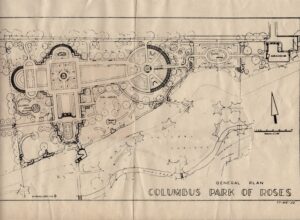
Construction began in June 1952. Minimal grading was necessary as the gentle slope of the meadow was ideal for drainage and air circulation. Planting began in the fall of 1952, and was completed in April 1953.
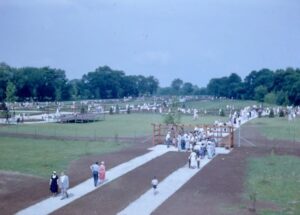
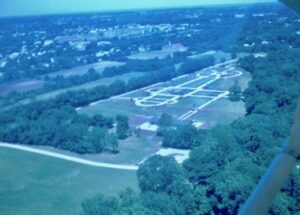
The CPOR opened to the public June 6, 1953, and was dedicated September 13, 1953 as seen here.
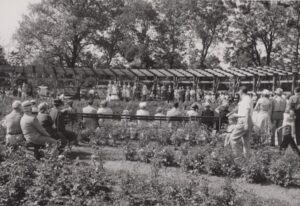
Some interesting facts include:
- During WWII, there were more than 500 victory gardens in the area that became Whetstone Park.
- To prepare the rose beds, 21,000 bales of imported peat moss were mixed with the soil.
- For a number of years, the rose beds were mulched with finely crushed corn cobs.
- Night lighting, a children’s garden and a lilac grove were in the initial plans for the CPOR.
- Admission was 25 cents for adults and 10 cents for children.
- Until the mid-1960s, a Maiden of Roses and her court were selected annually among local female high school contestants.
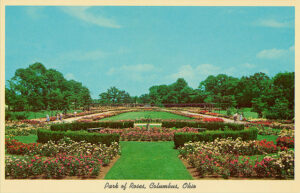
The CPOR has changed in many ways since 1953. A fountain was added in 1957. In 1975, the historic Fort Hayes Gazebo was moved to the gardens. The Perennial and Herb Gardens were added sometime in the 1980s. In 1986, the Heritage Rose Garden was established. The Daffodil Garden, which was established by the 1980s, was re-configured to The Earth-Kind Rose Garden in 2008, and later as the Backyard Garden. Because of its large collections of trees and shrubs, the CPOR achieved arboretum status in 2016.
Over the years, the CPOR has garnered many honors, including designation as an All-American Rose Selection garden, listed as one of USA Today’s 10 Places to Admire the Bloom on the Rose in 2006, and being one of Columbus’ top wedding venues. The Columbus Park of Roses continues to be a favorite destination for local residents as well as regional and international visitors.
